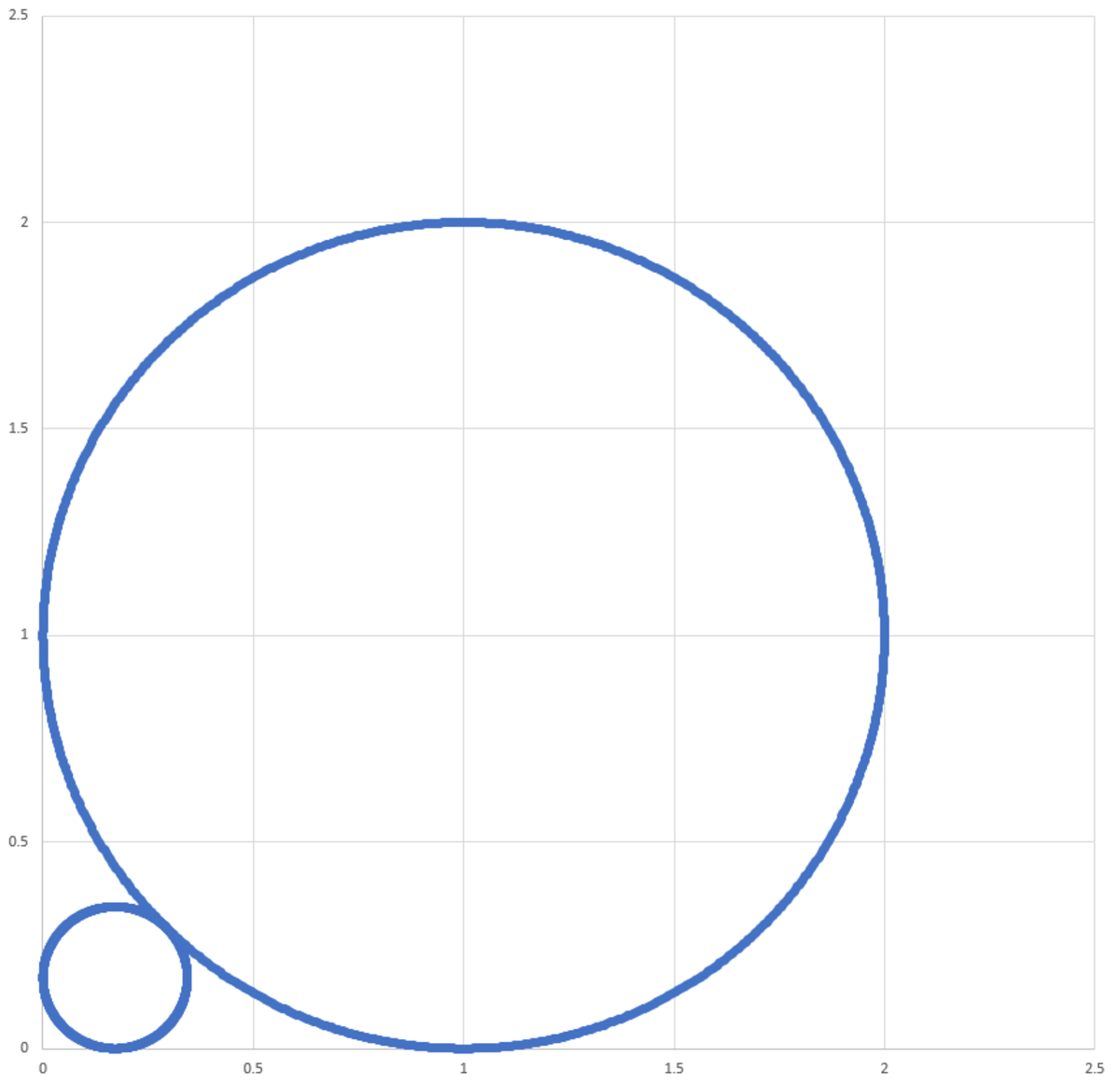Circle Area Geometric Series
Here is a question I was asked recently (click for zoomed-in version).

Let's look at a case where the first circle has a radius of . It is a scaled version of the problem under consideration.

The center of the big circle is at , the center of the little circle is at , and the point of contact is . We know that the radius of the small circle is equal to the distance from the center of the small circle to the point of contact.
Solving for yields . The ratio of the area of the small circle to the big circle is .
Now back to the problem at hand. The area of the circle of radius is . The remaining circles follow in an infinite geometric series with common ratio . The total area is therefore:
Easy Math Editor
This discussion board is a place to discuss our Daily Challenges and the math and science related to those challenges. Explanations are more than just a solution — they should explain the steps and thinking strategies that you used to obtain the solution. Comments should further the discussion of math and science.
When posting on Brilliant:
*italics*or_italics_**bold**or__bold__paragraph 1
paragraph 2
[example link](https://brilliant.org)> This is a quote# I indented these lines # 4 spaces, and now they show # up as a code block. print "hello world"\(...\)or\[...\]to ensure proper formatting.2 \times 32^{34}a_{i-1}\frac{2}{3}\sqrt{2}\sum_{i=1}^3\sin \theta\boxed{123}Comments
@Steven Chase Thanks you so much sir.
@Steven Chase BTW how do you predicted that they will follow geometric progression?
Thanks in advance.
Log in to reply
Because the small circle just becomes the new big circle, and the whole thing repeats again
Log in to reply
Clever deduction. Nice!